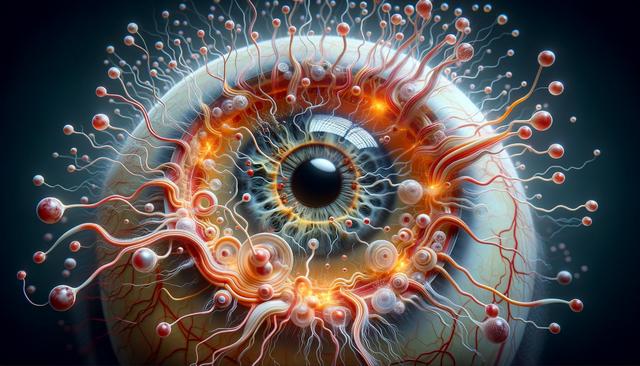Understanding Macular Degeneration: Causes, Symptoms, and Supportive Care
Macular degeneration is a chronic eye disease that affects central vision and primarily impacts people over the age of 50.

What Is Macular Degeneration?
Macular degeneration, often referred to as age-related macular degeneration (AMD), is a progressive eye condition that affects the macula — the small central portion of the retina responsible for clear, sharp vision. As the disease progresses, individuals may experience blurred or no vision in the center of their visual field, making everyday activities such as reading, driving, and recognizing faces increasingly difficult. There are two primary types of macular degeneration: dry and wet. Dry AMD, the more common form, is characterized by the thinning of the macula over time. Wet AMD, though less common, is more severe and results from abnormal blood vessels growing under the retina and leaking fluid or blood.
The exact cause of macular degeneration is not fully understood, but a combination of genetic and environmental factors are believed to contribute. The risk increases with age, and other contributing factors may include smoking, obesity, high blood pressure, and a family history of the condition.
Recognizing the Symptoms
Early detection of macular degeneration can be challenging because symptoms often develop gradually and without pain. Most people may not notice any changes in vision during the early stages. However, as the disease progresses, noticeable symptoms may begin to appear, including:
- Blurry or fuzzy vision
- Difficulty recognizing faces
- Dark or empty areas in the center of vision
- Distorted vision, where straight lines appear wavy
These symptoms can significantly affect daily life. Regular eye exams, especially for individuals over 50, are essential for early diagnosis and management. Eye care professionals may use tools such as the Amsler grid or optical coherence tomography (OCT) to detect early signs of damage to the macula.
Causes and Risk Factors
While age remains the most significant risk factor for macular degeneration, several other elements may contribute to its onset and progression. Understanding these factors can help individuals take proactive steps in maintaining eye health. Common risk factors include:
- Genetics: A family history of AMD increases the likelihood of developing the condition.
- Smoking: Tobacco use doubles the risk of macular degeneration.
- Cardiovascular disease: Conditions such as high blood pressure and high cholesterol may impact eye health.
- Diet and lifestyle: Poor nutrition and lack of physical activity may contribute to retinal damage.
Exposure to ultraviolet light and prolonged screen time may also play a role, though more research is needed in these areas. A healthy lifestyle, balanced diet, and protective eyewear can help reduce risk.
Treatment Options and Management
There is currently no cure for macular degeneration, but various treatments can help slow its progression and support vision health. The management approach largely depends on whether a person has the dry or wet form of the disease. For dry AMD, treatment focuses on lifestyle changes and the use of dietary supplements containing antioxidants and zinc, which may help reduce the risk of progression. These supplements are often referred to in studies as part of the AREDS (Age-Related Eye Disease Study) formula.
For wet AMD, treatment options may include:
- Anti-VEGF injections: These medications inhibit the growth of abnormal blood vessels in the retina.
- Photodynamic therapy: A light-activated drug is used to target and destroy abnormal blood vessels.
- Laser surgery: In some cases, high-energy lasers are used to seal leaking blood vessels.
Regular monitoring and follow-up with an eye care professional are essential for managing the condition effectively. Early intervention can make a significant difference in preserving vision.
Living with Macular Degeneration
Adjusting to life with macular degeneration can be challenging, but many individuals find ways to adapt and maintain their independence. Vision rehabilitation services offer valuable tools and training for those with significant vision loss. These services may include the use of low vision aids such as magnifiers, specialized lighting, and electronic reading devices.
Support groups and counseling can also be beneficial, providing emotional support and practical advice for coping with vision changes. Additionally, implementing changes at home and work can improve safety and accessibility. Examples include:
- Using high-contrast labels and large-print materials
- Installing brighter lighting in key areas
- Organizing living spaces for easier navigation
- Learning to use audio books and voice-activated technology
Maintaining a healthy lifestyle — including a diet rich in leafy greens, omega-3 fatty acids, and regular physical activity — may also support overall eye health and slow disease progression.
Conclusion
Macular degeneration is a complex condition that requires ongoing attention, but with early detection, proper management, and lifestyle adjustments, many people continue to lead active and fulfilling lives. Whether you are at risk or already experiencing symptoms, staying informed and working closely with eye care professionals can make a meaningful difference in preserving your vision. Regular eye exams, healthy living habits, and the use of supportive resources can help mitigate the impact of this common age-related eye disease.